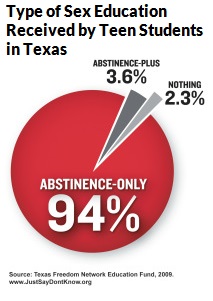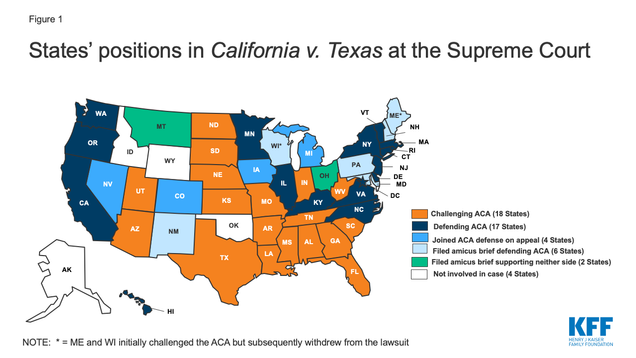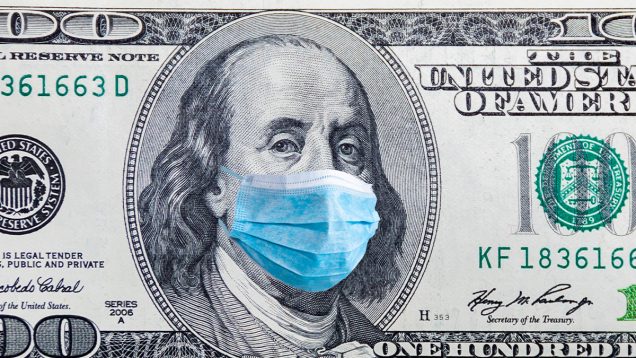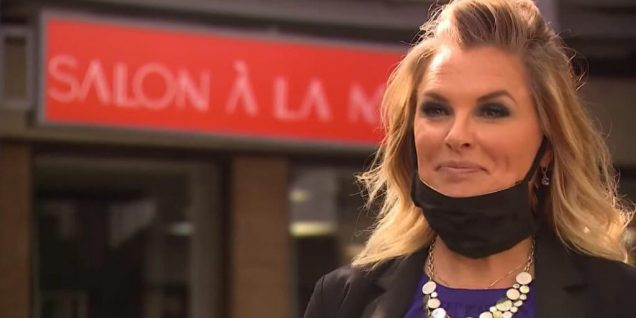Category: State Legislation
We Need to Take Plastic Regulation More Seriously: Plastics as a Major Climate Change Contributor
Plastics are commonplace in modern society, despite increasing awareness of their negative environmental impacts. It is evident that plastic pollution litters our oceans and greenery, with devastating effects on natural ecosystems. Yet, the poor disposal of plastics is only part of the story—the production and management of plastics are incredible climate change contributors. Governmental action, however, has primarily focused on regulating the consumer and mitigating the impacts of plastics after use. Given the increasing urgency of climate change, it is time for the government to take the harm of plastics more seriously and regulate its production as the serious climate contributor it is.
The Plastic Problem
 Every year, between five hundred billion and one trillion plastic bags are used worldwide. (Jennie Reilly Romer, Comment: The Evolution of San Francisco’s Plastic-Bag Ban, 1 Golden Gate Univ. Envtl. L. J. 439, 439 (2007).) The average lifespan of a plastic bag is only twelve minutes. (Travis P. Wagner, Reducing single-use plastic shopping bags in the USA, Waste Management 70, 3, 4 (Sept. 2017).) This short lifecycle comes from a mix of user apathy and the fact that recycling plastics costs more than creating new plastics. (CIEL Report).
Every year, between five hundred billion and one trillion plastic bags are used worldwide. (Jennie Reilly Romer, Comment: The Evolution of San Francisco’s Plastic-Bag Ban, 1 Golden Gate Univ. Envtl. L. J. 439, 439 (2007).) The average lifespan of a plastic bag is only twelve minutes. (Travis P. Wagner, Reducing single-use plastic shopping bags in the USA, Waste Management 70, 3, 4 (Sept. 2017).) This short lifecycle comes from a mix of user apathy and the fact that recycling plastics costs more than creating new plastics. (CIEL Report).
Thus, the plastic or fossil fuel industry continues to produce new plastic, adding to greenhouse gas emissions with each item produced. “At current levels, greenhouse gas emissions from the plastic lifecycle threaten the ability of the global community to keep global temperature rise below 1.5°C degrees. By 2050, the greenhouse gas emissions from plastic could reach over 56 gigatons—10-13 percent of the entire remaining carbon budget.” (CIEL Report at 1.)
The Plastic Lifecycle
There are numerous reasons that plastics are considered to be major climate contributors. First, the substances used to make plastic, like ethylene and propylene, are derived from oil, gas, and coal, which must be extracted from the ground. (CIEL Report, at 21.) The combustion of these fuels and conversion of the petrochemicals each directly emit greenhouse gasses. (CIEL Report, at 44.)
Next, plastic production contributes indirectly to greenhouse gas emissions because the refining and manufacturing machines are powered by fossil fuels. (Id.). Currently, plastic production accounts for four to eight percent of global oil consumption every year and is projected to increase to about twenty percent by the year 2050. (CIEL Report, at 24). Studies have shown that for some plastics, the production process contributes up to sixty-three percent of the emissions in the plastic lifecycle. (Spyros Foteinis, How small daily choices play a huge role in climate change: The disposable paper cup environmental bane, 255 J. of Cleaner Production 1, 5 (Jan. 27, 2020)).
Further, some studies have attributed 37% of greenhouse gas emissions from plastics to management, or disposal processes. (Id.). Most plastic waste is put in a landfill. (CIEL Report, at 6). This is again because the cost of managing waste can often exceed the value of the materials that would be recovered from the recycling. (Wagner, at 5.) Additionally, plastic can only be “downcycled,” so single-use plastic can be of too poor quality to recycle. (Romer, at 446). As of 2017, only nine percent of all plastic discarded since 1950 has been recycled, and twelve percent incinerated. (CIEL Report, at 55).
Finally, some plastic is simply not managed. A portion of plastic is therefore just pollution. Such plastic often ends up in oceans and waterways, where it degrades slowly, releasing greenhouse gases and interfering with carbon sequestration. (Id.).
Current Regulation
Most current regulation deals with pollutant plastic, or plastic which has been used and discarded, causing obvious  environmental blight. Some cities and states have attempted to reduce plastic consumption by regulating the use of plastic bags. (Muhammad S. Khan et. al., Consumer green behaviour: An approach towards environmental sustainability, 28 Sustainable Development 5, 1019, 1168 (Oct. 8, 2020).). Local governments have also attempted to require the industry to invest in MSW management—thirty-three states have enacted extended producer responsibility (“EPR”) laws, which require producers to internalize some of the end-of-life costs of their products. (Wagner, at 3). Finally, localities often used unit-based pricing when picking up trash—but allow free recycling to incentivize residents to sort their own waste. (Id.).
environmental blight. Some cities and states have attempted to reduce plastic consumption by regulating the use of plastic bags. (Muhammad S. Khan et. al., Consumer green behaviour: An approach towards environmental sustainability, 28 Sustainable Development 5, 1019, 1168 (Oct. 8, 2020).). Local governments have also attempted to require the industry to invest in MSW management—thirty-three states have enacted extended producer responsibility (“EPR”) laws, which require producers to internalize some of the end-of-life costs of their products. (Wagner, at 3). Finally, localities often used unit-based pricing when picking up trash—but allow free recycling to incentivize residents to sort their own waste. (Id.).
However, these regulations generally focus only on regulating consumers rather than the plastics industry. Plastic bans incentivize a reduction in use, but only for a selection of plastics, at cost of the individual user. EPRs do regulate the plastic industry, but mainly forces the companies to internalize the economic cost, since the climate damage has already occurred by the time of disposal. Further, providing free recycling focuses solely on the consumer and does little to reduce the environmental cost given the lack of recycling that actually occurs and by again by focusing on only the end-of-life processes, after much of the climate damage has occurred.
It is therefore time for the government to take the greenhouse gas emissions over the plastic lifecycle more seriously, and work to reduce the production of plastics by directly regulating the plastics and fossil fuel industries—because they are the same thing.
Recommendations for the Future
The ideal environmental solution would be to reduce plastic manufacturing by setting limits on production; banning single-use plastic production and use; and stopping new oil, gas, and petrochemical infrastructure. (CIEL Report, at 82-83). Higher taxation on production could additionally achieve these reduction goals and incentivize the recycling of existing plastics. The federal and state governments could also adopt more stringent greenhouse gas emission targets and rigorously enforce them, including plastics in their calculations of emissions. (Id.)
Any of these solutions will be a political battle, however. The regulation of plastic has historically been impeded by the fossil fuel industry, which makes over four hundred billion dollars a year making plastic. Years of misinformation and court challenges by the fossil fuel industry have led to politicians shying away from plastics regulation. (See Jennie R. Romer & Shanna Foley, A Wolf in Sheep’s Clothing: The Plastics Industry’s “Public Interest” Role in Legislation and Litigation of Plastic Bag Laws in California, 5 Golden Gate University Environmental Law J. 377, 381 (2012).).
Perhaps, then, the first step is simply to acknowledge the climate impact of plastics and increase public support of greater regulation to provide the political incentive. The lack of attention to this issue is evidenced by the fact that Biden’s “Executive Order on Tackling the Climate Crisis at Home and Abroad” does not even include the word plastic. This is an unacceptable reality if we ever hope to truly make climate progress. It is time for the government to take plastic regulation more seriously—we simply cannot afford not to.
 Meghan McCarthy anticipates graduating from Boston University School of Law in May 2022.
Meghan McCarthy anticipates graduating from Boston University School of Law in May 2022.
A Pandemic Silver Lining: Health Care Reform in Massachusetts
On January 1, 2021, Massachusetts Governor Charlie Baker signed into law an omnibus healthcare law called “An Act Promoting A Resilient Health Care System That Puts Patients First.” This multi-faceted healthcare law addresses various healthcare issues that have come to light or been worsened by the COVID-19 pandemic. This includes the codification of some emergency orders from the early days of the COVID-19 pandemic that helped loosen restrictions in order to provide easier access to healthcare. Thematically, the main provisions of the bill include: (1) surprise billing; (2) practitioner scope of practice; (3) telehealth; and (4) healthcare accessibility. First, each of these provisions will be discussed. Then, possible shortcomings of the law will be considered. To conclude, we must question why it took a pandemic to bring commonsense change to Massachusetts healthcare.
Surprise Billing
The act addresses so-called surprise medical bills, where the charges are higher than the insured individual expected, likely  because they inadvertently received care from an out-of-network provider. This can happen if: (1) the insured patient receives care from an out-of-network provider in an emergency situation where the patient has no ability to select the care; or (2) the insured patient receives pre-planned care from an in-network facility, but the services are provided by an out-of-network provider.
because they inadvertently received care from an out-of-network provider. This can happen if: (1) the insured patient receives care from an out-of-network provider in an emergency situation where the patient has no ability to select the care; or (2) the insured patient receives pre-planned care from an in-network facility, but the services are provided by an out-of-network provider.
Surprise medical billing has been in the spotlight at both state and federal levels. In late 2020, President Trump signed the No Surprises Act which holds consumers harmless from the cost of unanticipated out-of-network medical bills. The act applies to nearly all private health plans offered by employers, as well as insurance policies offered through the federal marketplace, but does not take effect until January 1, 2022. In addition, the federal law does not preempt state law, but instead defers to state requirements around surprise billing. To date, at the state level, 27 states have passed consumer protection laws against surprise medical bills and, in 2020, 5 additional states have passed and will enact or have enacted surprise billing legislation.
The Massachusetts law: (1) requires providers to disclose if they are out-of-network prior to the patient’s admission; (2) requires providers, upon request, to share the amount that the patient will be charged for admission, a procedure, or a service, including costs for services done by an out-of-network provider; (3) requires providers to notify patients if the patient is being referred to an out-of-network provider; (4) prohibits providers from billing insured patients in excess of the typical, applicable coinsurance, copayment, or deductible that would have been charged if services were provided by an in-network provider; and (5) directs the Secretary of the Executive Office of Health and Human Services, the Health Policy Commission, Center for Health Information and Analytics, and Division of Insurance to recommend a default rate for out-of-network billing by September 2021.
However, even after the expanded protections against surprise medical billing, Massachusetts is still categorized as a state with partial balance billing protections from The Commonwealth Fund and as a state with a limited approach to surprise billing from The Kaiser Family Foundation. Both organizations have found that to be considered comprehensive, a state must additionally: (1) hold patients harmless, (2) create a dispute resolution process between the insurer and provider; (3) provide a formula that the insurer must apply when determining how much to pay an out-of-network provider; and (4) apply in specific care settings, like emergency departments. The current Massachusetts law’s direction to recommend a default rate for billing is a step in the right direction towards a comprehensive approach to surprise medical billing, but will need to be taken further.
Practitioner Scope of Practice
The Massachusetts act also makes statutory changes to the scope of practice for several categories of health care practitioners. The act codified previous Department of Public Health emergency administrative orders allowing advanced practice registered nurses (“APRNs”), including nurse anesthetists, nurse practitioners, and psychiatric nurse mental health clinical specialists to have: (1) expanded practice at mental health facilities; and (2) independent prescriptive practice. To qualify for the expanded scope of practice provision, the APRNs must meet specific qualifications, including at least two previous years of supervised practice under a physician. The emergency orders were in response to the onset of the COVID-19 pandemic, but will now extend past the pandemic due to the act.
The act also expands scope of practice for optometrists. Optometrists now have prescriptive authority and can treat glaucoma. The act also creates an option for reciprocity for optometrists with licensure in other states. Additionally, psychiatric nurse mental health clinical specialists have expanded authority for determinations on psychiatric evaluations, restraints, and hospitalizations. Finally, the act recognizes the role of pharmacists, who are now able to integrate with coordinated care teams to review medications and identify areas of clinical improvement.
Telehealth
The act also codifies earlier COVID-19-related emergency changes to telemedicine. At the federal level, the Department of Health and Human Services made access to telehealth easier through guidance on HIPAA flexibility, allowing entities to file waivers with the Centers for Medicare & Medicaid Services related to originating sites, cross-state telemedicine, provision of care to new patients through telehealth, and billing for telehealth services as though they were in-person. At the state level, a Massachusetts emergency order required insurers to cover all medically necessary telehealth services and required that these services be reimbursed at the same rate as in-person services, creating pay parity between telehealth and in-person visits.
 The new Massachusetts act: (1) updates the definition of “telehealth” to include audio-only services; (2) eliminates the requirement for providers to show barriers to in-person care or limitations on location settings in order to access telehealth services; (3) prohibits insurers from declining coverage of healthcare services solely because the services were provided through telehealth as long as the healthcare service would otherwise have been covered in-person and it may be appropriately provided through telehealth; (4) requires pay parity for copays and deductibles for in-person and telehealth services, plus extends the temporary emergency order for pay parity for 90 days after the expiration of the COVID-19 state of emergency in Massachusetts; and (5) requires licensed hospitals, insurers, health maintenance organizations (“HMOs”), and the Executive Office of Health and Human Services to ensure that the pay rate for in-network providers of behavioral health services and chronic disease management services provided via telehealth be no less than the rate of payment for the same services when provided in person.
The new Massachusetts act: (1) updates the definition of “telehealth” to include audio-only services; (2) eliminates the requirement for providers to show barriers to in-person care or limitations on location settings in order to access telehealth services; (3) prohibits insurers from declining coverage of healthcare services solely because the services were provided through telehealth as long as the healthcare service would otherwise have been covered in-person and it may be appropriately provided through telehealth; (4) requires pay parity for copays and deductibles for in-person and telehealth services, plus extends the temporary emergency order for pay parity for 90 days after the expiration of the COVID-19 state of emergency in Massachusetts; and (5) requires licensed hospitals, insurers, health maintenance organizations (“HMOs”), and the Executive Office of Health and Human Services to ensure that the pay rate for in-network providers of behavioral health services and chronic disease management services provided via telehealth be no less than the rate of payment for the same services when provided in person.
Healthcare Accessibility
The act’s provisions related to healthcare accessibility are wide and varied. The act addresses broad healthcare issues that have posed problems for many years, but have been exacerbated due to the COVID-19 pandemic. Two relevant provisions include: (1) Massachusetts Medicaid or MassHealth patients no longer need to seek referrals from a primary care provider to an urgent care visit; and (2) all insurers, including MassHealth, must cover all COVID-19 related emergency, inpatient, and cognitive rehabilitation services, plus they must cover all medically necessary COVID-19 testing.
Conclusion
Though this bill tackles many issues that public health experts have promoted for years, there are always additional healthcare problems to be solved. Governor Baker notes that he hopes, in future years, to focus on addiction services, behavioral health, primary care and geriatric services, and prescription drug prices.
However, the law is not without its detractors. The Massachusetts Medical Society, for instance, while applauding many provisions, took issue with: (1) the added burden on physicians to notify patients about possible out-of-network care and billing; (2) the general increased scope of practice for nurse practitioners, psychiatric nurse mental health clinical specialists, and certified registered nurse anesthetists, arguing that a physician-led team is the best care team; and (3) the lack of permanent pay parity for all telehealth services. Thus, it is likely that the law will face some pushback from physicians. Additionally, as seen with the surprise billing provisions, there are ways that the state could have gone further to provide more patient protection and access to healthcare.
The question remains, however. Why did it take a pandemic to bring about common-sense healthcare changes to Massachusetts? The answer, I think, lies in the shared experience of the COVID-19 pandemic. Governor Charlie Baker, while signing the bill into law, said that the “silver lining” of the pandemic has been that healthcare reforms were tested and proved effective, generating momentum to create long-lasting change for the future. There’s more to it than that. Even before the pandemic, we’ve all seen and heard from friends and family that the healthcare system is broken and now we’ve all seen how the pandemic has only exacerbated that. Massachusetts residents and members of the legislature have seen how barriers to care - like difficulties paying off a surprise medical bill and having to go into medical debt, difficulties getting an appointment with your physician because they’re busy with the pandemic but also then being unable to see an APRN for care, or an inability to access telehealth when you’re scared of going for in-person care in the midst of a pandemic - has affected our loved ones throughout the pandemic. It’s this shared experience and now shared understanding of the hardships of our existing healthcare system that drove the healthcare reforms and success of this bill.
 Megha Mathur anticipates graduating from Boston University School of Law in May 2022.
Megha Mathur anticipates graduating from Boston University School of Law in May 2022.
Fighting the Federal Government: California’s Mission to Stop Environmental Rollbacks
In July of 2020, California passed the historic Clean Trucking Rule, the first of its kind in the world. The rule requires manufacturers to sell increasing percentages of zero-emission trucks in the state. While many have applauded the action, the Trump administration was not a fan of the rule. California and the Trump administration have been at odds for years, as California has attempted to make up for the lack of climate action at the federal level. Over just four years, President Trump’s administration reversed over 100 environmental rules and regulations. To make up for the loss, California has passed numerous regulations and initiated at least twenty-four lawsuits to halt the Environmental Protection Agency’s (“EPA”) rollbacks. California, given its unique legal status on environmental issues, has proven itself to be a clear leader on climate action and emission reduction.
The Clean Air Act
When it comes to the climate, California is not restricted by Constitutional provisions such as the Commerce and Preemption Causes. The Clean Air Act (“CAA”), first passed in 1970, gives the federal government the ability to regulate pollutants that are emitted into the ambient air and prohibits states from adopting or attempting to enforce any of their own motor vehicle emission controls. However, section 209(b) of the CAA allows states that had adopted standards prior to 1966 could apply for a waiver to that prohibition; and only California qualified. California was the first state to attempt controlling auto pollution and needed the ability to adopt more stringent controls to address the state’s extreme smog problem. To set new motor vehicle emissions standards, California must apply for a waiver from the EPA. The EPA administrator shall grant the waiver unless the standard is (1) arbitrary and capricious, (2)is not needed for compelling and extraordinary conditions, or (3) is not consistent with the CAA. Since 1970, administrators have consistently granted California its waivers. One exception was a waiver for new emissions restrictions on vehicles starting in 2009 that was initially denied in 2008, but President Obama later reversed the denial. This waiver program has created numerous California programs that differ from federal standards, including the Zero Emissions Vehicles (“ZEV”) Program, The Advanced Clean Cars program, and Low Emission Vehicles (“LEV”) Standards.
Under section 177 of the CAA, other states can choose to adopt either the current federal regulations or the California regulations if that will help the state achieve the CAA requirements more efficiently. As of August 2019, fourteen states have adopted portions of California’s ZEV and LEV programs.
California’s New Rule
The California Air Resources Board (“CARB”) established the Advanced Clean Truck Program. The program requires that
beginning in 2024 manufacturers sell zero-emission trucks— that is electric and fuel cell powered trucks—as an increasing percentage of their annual California sales. Zero emission trucks need to make up 55% of Class 2b – 3 truck sales, 75% of class 4 – 8 straight truck sales, and 40% of truck tractor sales by 2035. Massachusetts and seven other states have pledged to follow California’s lead for medium and heavy duty trucks. Additionally, fifteen states and Washington D.C. have signed a memorandum of understanding pledging to each develop an action plan to support widespread electrification of medium and heavy duty vehicles.
With these monumental steps forward, the federal government started to push back. The Trump EPA and National Highway Traffic Safety Administration (“NHTSA”) issued a final rule titled the “One National Rule Program,” which finalized parts of the Safer, Affordable, Fuel-Efficient (“SAFE”) Vehicles Rule that was first proposed in August 2018. The action makes clear that federal law preempts state and local tailpipe greenhouse gas emissions standards as well as ZEV mandates. As soon as President Biden took office, however, he ordered federal agencies to reexamine these changes.
The EPA and California’s Rule
 The California rule is set to take effect in 2024, but a waiver must be approved by the EPA beforehand. The EPA has never gone through a denial of a California waiver before, but that has not stopped the Trump Administration from trying to revoke previously granted waivers for zero emission passenger vehicle standards. The EPA is pursuing the revocation of California’s 2013 preemption waiver for greenhouse gas emissions and ZEV programs. This revocation is currently being challenged in court. If former President Trump won the 2020 election, the EPA may have tried to deny California’s zero emission truck regulations waiver. The EPA, however, would have faced an uphill battle because there is clear evidence that reducing emissions is necessary to help California achieve its CAA goals. California’s argument would have been bolstered by the recent wildfires that destroyed large swaths of the state. It was unlikely the EPA could have offered enough solid evidence to uphold their waiver denial. In addition, most legal experts agree that California, and the states that follow their regulations, had a strong case that the Trump Administration’s efforts were unlawful. Still, the changing balance on federal appeals courts and the Supreme Court could undermine California’s waiver process and spell the demise of the original purpose and intent of the CAA. For the time being, however, California and allied states continue to have a valuable tool to fight climate change and reduce emissions across the entire nation regardless of who controls the EPA.
The California rule is set to take effect in 2024, but a waiver must be approved by the EPA beforehand. The EPA has never gone through a denial of a California waiver before, but that has not stopped the Trump Administration from trying to revoke previously granted waivers for zero emission passenger vehicle standards. The EPA is pursuing the revocation of California’s 2013 preemption waiver for greenhouse gas emissions and ZEV programs. This revocation is currently being challenged in court. If former President Trump won the 2020 election, the EPA may have tried to deny California’s zero emission truck regulations waiver. The EPA, however, would have faced an uphill battle because there is clear evidence that reducing emissions is necessary to help California achieve its CAA goals. California’s argument would have been bolstered by the recent wildfires that destroyed large swaths of the state. It was unlikely the EPA could have offered enough solid evidence to uphold their waiver denial. In addition, most legal experts agree that California, and the states that follow their regulations, had a strong case that the Trump Administration’s efforts were unlawful. Still, the changing balance on federal appeals courts and the Supreme Court could undermine California’s waiver process and spell the demise of the original purpose and intent of the CAA. For the time being, however, California and allied states continue to have a valuable tool to fight climate change and reduce emissions across the entire nation regardless of who controls the EPA.
 Conner Kingsley anticipates graduating from Boston University School of Law in May 2021.
Conner Kingsley anticipates graduating from Boston University School of Law in May 2021.
A More Perfect Election: Which COVID Election Reforms Massachusetts Should Keep And What Needs To Be Fixed
While the COVID-19 pandemic will no doubt be remembered as one of our nation’s most tragic events there may be at least one bright spot that emerges from an otherwise catastrophic era: a ground up rethinking of elections systems. It’s was not ideal timing; many voters believed that the 2020 general election was the most important in a generation and also feared that mass voting system reform would wreak havoc. Nevertheless, the COVID-19 election experience offers the opportunity to create needed and lasting improvements to our electoral system.
The Massachusetts Legislature prepared for the pandemic election by passing “An Act Relative to Voting Options in Response to Covid-19” a few months before the September 1, 2020 primary. The Act provided for early voting before the primary and greatly  expanded access to mail-in voting for both the primary and general election. Most of the Act’s provisions expired on December 31, 2020, but this may be for the best; the Legislature should develop a more permanent election reform bill during the new legislative session. Below are provisions lawmakers should keep—and scrap.
expanded access to mail-in voting for both the primary and general election. Most of the Act’s provisions expired on December 31, 2020, but this may be for the best; the Legislature should develop a more permanent election reform bill during the new legislative session. Below are provisions lawmakers should keep—and scrap.
KEEP: No-excuse vote-by-mail option for both primary and general elections.
Current Massachusetts law allows no-excuse mail-in voting only for biennial general elections. In other elections a voter must be either absent from their municipality or physically disabled to qualify for mail-in voting. The recent act allowing mail-in voting for the primary should become the norm. Of the estimated 18.9 million registered voters who did not cast a ballot in 2016, 19.3% percent cited reasons (see table 4) such as transportation problems, busy schedules, inconvenient polling places—and another 3% simply forgot. When Colorado implemented all-mail voting in 2014, election turnout increased 9.4% overall. The biggest gains were with traditionally low turnout groups: younger voters (16.6% increase), blue-collar workers (10%), and minority voters (13.2% for Black voters, 10% for Latinx voters, and 11.2% for Asian voters). Utah and other states increasing vote-by-mail saw similar increases in turnout. This year, 1,705,388 voters participated in the Massachusetts primary; the highest raw vote count ever for a primary. Granted, there was great voter enthusiasm due to contentious US Senate race between Senator Ed Markey and Congressman Joe Kennedy, but a lot of credit should go to the COVID-19 election reforms since about half of the ballots were sent by mail. In a state where non-Presidential Primary elections have peaked around 26% in the last 30 years, there’s no doubt that mail-in balloting is the way to keep this number rising in future.
SCRAP: Mail-in Ballot Applications.
Currently, Massachusetts requires voters to fill out and return an application to receive their mail-in ballots. Legislators should scrap this unnecessary and costly hurdle and join 10 other states that mail ballots to all registered voters.
First, the application requirement costs the Commonwealth a lot of money. Undoubtedly, the state made the right move by mailing applications to every voter—but paid postage for at least 4.6 million pieces of mail one-way, and millions more that were returned. There is also the cost of labor to prepare the mailings and process the returned applications. Secretary of the Commonwealth William Galvin estimated that each of the two mailings cost around $5 million.
Secondly, mail-in ballot applications are a superfluous hurdle to casting a vote in a primarily mail-in election regime. To a voting populace that already has difficulty meeting registration deadlines or remembering election day, an application requirement presents yet another step to forget and a deadline that can easily be missed. Mailing ballots directly to voters eliminates this unnecessary barrier to entry and ensures that every voter receives a ballot in a timely manner, no hoop-jumping required.
KEEP: Ballot Drop Boxes.
The July bill added the option of returning mail-in ballots “via a secured municipal drop box.” This was a huge win for both busy voters who are skeptical of the USPS and for the Commonwealth, which saves money on the return postage. This is a long-term change reflected in the written statutes and should be a positive change in all future elections!
SCRAP: Election Day Deadline for Receiving Ballots.
Current Massachusetts law only allows counting late ballots if they come from overseas. In the COVID Act, the legislature adopted a 3-day extension for ballots postmarked by election day for the November general election, but not the primary election. This distinction lead to an unsuccessful legal challenge by a candidate in the Democratic race for the Fourth Congressional District. 8,000 ballots were later rejected for arriving past the deadline. Given the recent problems with the USPS, the election day receipt deadline simply won’t cut it.
The 3-day window was a good starting point, but it is falls woefully short of the laws in other states. In 2020, 24 states have receipt deadlines of at least 5 days, and of those, 14 states allow ballots to be counted even beyond 5 days. It’s difficult to pinpoint the appropriate amount of time needed here in the Bay State without more data, but there’s no reason that progressive Massachusetts should have anything shorter than a 5-day late ballot allowance.
BONUS: Add extended cure period for defective mail-in ballots.
It’s unavoidable that a certain amount of ballots will be returned unsigned or in the wrong envelope. In September, at least 3,000 ballots were discarded because of a defect. Although Massachusetts is one of 18 states with a “cure provision” that allows voters to fix the defect with their mail-in ballot, there is room for improvement. In 2020, when the clerk received a defective mail-in ballot, the official must mail the voter a form explaining that their ballot was rejected and a substitute ballot, but only if “there is clearly []sufficient time for the voter to return another ballot.” (950 C.M.R. § 47.10(5)(b)).
Massachusetts should make two important changes to ensure every voter has their ballot counted. First, change the methods of notification. Massachusetts should copy Hawaii and Rhode Island and allow election officers to notify voters of a defective ballot by first-class mail, telephone and email. Second, allow voters to cure their ballot past election day. Other states offer anywhere from 2 to 14 days for voters to fix any defects in their ballots. These measures should help to close that final gap between ballots cast and votes counted.
There are positive signs that Massachusetts could be moving towards a primarily mail-in election future. Hopefully, the legislature will mitigate the pitfalls from this year’s attempt and incorporate successful policies used by other states to ensure that all voters have a meaningful opportunity to participate.
 Emily Swanson anticipates graduating from Boston University School of Law in May 2022.
Emily Swanson anticipates graduating from Boston University School of Law in May 2022.
There’s No Such Thing as Sex Without Consent
On January 16, 2020, the Massachusetts Senate passed S.2475 “An Act Relative to Healthy Youth,” which creates mandatory guidelines schools must follow when implementing their sex education curricula. This does not require schools to adopt a curriculum, and there is an opt-out provision for parents who do not wish their children to receive this education. Still, the bill requires medically accurate information be shared, that a comprehensive view of sex education be taught that goes beyond abstinence-only education, and, perhaps most importantly, the bill requires schools teach students about consent, boundaries, and healthy and safe relationships. Unfortunately, the 2020 legislative session came to an end with the bill stuck in the House Committee on Ways and Means.
Sex Education in the United States
In the United States, sex education started as a movement to discourage masturbation in young men, and encourage abstinence before marriage. While sex education started to spring up more in public schools during the 1920s, it wasn’t until the 1950s when the the American Medical Association and public health officials first advocated a standardized curriculum. The 1960s saw religious and conservative groups attack sex education, asserting that teaching youths about sex would make sexual engagement more likely. In the 1980s, the HIV/AIDS health crisis led many officials, backed by federal funding, to require abstinence-only sex education in schools.
before marriage. While sex education started to spring up more in public schools during the 1920s, it wasn’t until the 1950s when the the American Medical Association and public health officials first advocated a standardized curriculum. The 1960s saw religious and conservative groups attack sex education, asserting that teaching youths about sex would make sexual engagement more likely. In the 1980s, the HIV/AIDS health crisis led many officials, backed by federal funding, to require abstinence-only sex education in schools.
By 2009, the federal government was putting $170 million per year into these George H.W. Bush era programs. Under President Obama, the federal government continued funding abstinence-only programs, but also introduced a more comprehensive sex-education approach in an effort to reduce teen pregnancy. The Trump administration then gutted the Teen Pregnancy Prevention Program, restricting federal funding to abstinence-only programs.
On the state level, 37 states require sex education programs to cover abstinence and 27 of those require prioritizing abstinence.  Students who attend schools with less funding are more likely to receive abstinence-only education, leading to a correlation between socioeconomic status and an increase in teen pregnancy, STDs, and sexual violence.
Students who attend schools with less funding are more likely to receive abstinence-only education, leading to a correlation between socioeconomic status and an increase in teen pregnancy, STDs, and sexual violence.
Currently, only 8 states and Washington D.C. require students learn about consent. Of these, seven passed their requirements within the last four years. In just 2019, four jurisdictions passed consent education requirements and nine more states introduced similar legislation.
The Importance of Consent Education
Sex is not sex without consent – it’s rape.
A Columbia University study indicated that those who received training in how to refuse sexual advances were less likely to be sexually assaulted in college. There was no similar correlation between abstinence-only sex education and sexual assault. Equipping students with the ability to set their own boundaries is important, but teaching students to recognize and respect those boundaries in others is just as necessary to prevent sexual violence. Merely giving students the tools to help them potentially get out of a situation they don’t want to be in is not enough, because it does not express the importance of consent in sexual interactions. As long as people fail to recognize and respect the consent of others, there will always be uncomfortable or dangerous situations to try to get out of – it’s mopping up the water from the overflowing sink without turning off the tap.
For young children, consent education reassures them that they have a say in what happens to their bodies (something many children are not aware of), and it teaches them to respect other peoples’ choices, as well. As students age, understanding consent as a concept allows them to form fundamental understandings of what healthy relationships with others look like. Beyond a reduction in sexual violence and misconduct, these are important life-skills that reach far beyond sexual situations.
The Opposition
There is still support for abstinence-only sex education in many parts of the country, and consent education is often seen as condoning sex. Unfortunately, resisting consent education works against abstinence-only goals by not providing students with the tools needed to establish healthy boundaries and respect for each other’s physical space. These skills are key for both those who wish to remain abstinent until marriage and for those who engaging in sex.
condoning sex. Unfortunately, resisting consent education works against abstinence-only goals by not providing students with the tools needed to establish healthy boundaries and respect for each other’s physical space. These skills are key for both those who wish to remain abstinent until marriage and for those who engaging in sex.
Some of those who oppose consent education, especially for younger students, worry that the subject matter may be too mature, but consent education does not have to be presented along with sex education for younger students to be effective. Consent is ultimately about permission, which is a concept children can easily grasp. For example, sharing and borrowing things involves consent. Additionally, teaching consent around hugging is a way to instill physical boundaries in children.
Looking Forward
West Virginia, Rhode Island, and D.C. have all adopted comprehensive legislation on consent education. These states require consent education based on the student’s age, introduce the concept of consent to younger children while assuaging some of the opponent’s concerns.
Harvard’s Graduate School of Education created a consent education model based on suggestions from educators across the country. The model proposed laying a foundation of consent and boundary building behaviors in younger children, and then including sex in the conversation for older students.
The Harvard model also recognizes that consent education should not be limited to straight boys but that anyone can perpetrate sexual violence and misconduct. Just as socioeconomic factors play a role in who receives comprehensive sex education, individuals holding certain identities are disparately impacted by sexual violence and students need to be aware of these inequities as they learn to navigate sex and consent.
Every school should adopt some form of consent education both before and during sex education. Otherwise, we will continue to endure a society that fails to respect the boundaries and choices of others. The Massachusetts Senate passed bill was a step in the right direction. Hopefully, the bill will become law during this new legislative session.
 Alexa Weyrick anticipates graduating from Boston University School of Law in May 2021.
Alexa Weyrick anticipates graduating from Boston University School of Law in May 2021.
The Real Cost of COVID-19: The Fractured Health Care System
The coronavirus (COVID-19) pandemic has uprooted the very foundation everyday life, turning socialization into a moral evil, and weaponizing safety precautions as political propaganda. These clear immediate costs, amounting in the loss of life, jobs, and social pleasures, are merely the surface to a rather elaborate system of institutional market failures that are bound to follow. While the coronavirus promptly began a long-awaited economic recession, forcing more than 31 million people in the United States to file for unemployment insurance, there has been a catastrophic loss of employer based health insurance coverage for many individuals, leaving only those who are eligible and qualified to move over to Medicaid or other subsidized health insurance policies. Unfortunately many have found themselves stuck in what is known as the “coverage gap,” with health care access becoming a novelty when its demand is at an all-time high.
Hospital and Insurance Coverage Crisis
Hospitals are largely believed to be price inelastic institutions, where demand for health services will remain constant, and funds will continuously keep providers operational even during economic recessions. While one might think that the COVID-19 public
health crisis would drive health care consumption, benefiting hospitals, it has actually been quite the opposite. Demand for healthcare services has been primarily for expensive specialized care, imposing high out-of-pocket expenses on individuals who are treated for COVID-19, and has further shifted from routine visits, seeing reductions as high as 60%.. The increased costs in specialized care, combined with the decrease in less costly routine care has not been the only shock to the health care industry. Additionally, by April of 2020, 1.4 million health care jobs were lost to enable hospitals to produce positive profit margins, creating staffing shortages across many US hospitals. This, paired with over 40 million Americans losing their jobs and shifting to subsidized healthcare and Medicaid, has created a loss of up to 20% of the commercial insurance market. By decreasing those covered by commercial insurance plans, cost aversion behaviors will decline health care usage, and those who are eligible will move over to Medicaid. Shifting from private to public insurance at this rate will cost Hospitals $95 billion in annual revenue. While Hospitals are experiencing adverse pressure, threatening what was believed to be recession proof industry, it is merely one of the many cracks that make up an unsustainable health care system.
The CARES Act and FFCRA’s Truncated Effect on the Health Care Crisis.
The passage of both the Coronavirus Aid, Relief, and Economic Security Act (“CARES Act”) and the Families First Coronavirus Response Act (“FFCRA”) has provided economic stimulus and safety protocols to expand health care access. These measures have covered COVID-19 diagnostic testing, mandating the elimination of cost-sharing, such as co-payments, deductibles, and coinsurance, for a wide array of group health plans and insurances. While this improves accessibility to preventative measures, it leaves open a large regulatory gap for the actual treatment of COVID-19, where individuals are still vulnerable to out-of-pocket expenses until they reach their cap for insurance to kick in, “ exceeding “$8,000 for an individual and $16,000 for a family.” The benefit of expanding access to testing is immeasurable, but the high costs of treatment poses a significant risk to those who are already underinsured. Further, these acts fail to eliminate cost-sharing for the uninsured, which accounts for 27.9 million nonelderly individuals in the US in 2018. While the number of uninsured Americans is certainly alarming, it is a great improvement from the number of uninsured prior to the enactment of the Affordable Care Act (“ACA”), where over 46.5 million nonelderly individuals were uninsured in 2010. Yet, the many positive effects that have followed the enactment of the ACA are at risk of being undone, with the Supreme Court of the United States reviewing four legal questions pertaining to the ACA.
The Uncertainty of Health Care in the face of California v. Texas.
 California v. Texas will be a test to the legislative muster of the ACA. With the recent confirmation of Justice Amy Coney Barrett to the Supreme Court, concerns of the ACA being overruled have surfaced as Justice Barrett has claimed that Chief Justice Roberts has “pushed the Affordable Care Act beyond its plausible meaning to save the statute.” The fate of the ACA hinders on whether the individual mandate is unconstitutional, and if so, if the individual mandate of the ACA is severable from the rest of the legislation. If the court does decide to overrule the ACA in its entirety, we may see more than 20 million individuals lose health care insurance, exacerbating the already grim public health crisis brought on by COVID-19, impacting our most vulnerable communities who struggle to gain access to health care.
California v. Texas will be a test to the legislative muster of the ACA. With the recent confirmation of Justice Amy Coney Barrett to the Supreme Court, concerns of the ACA being overruled have surfaced as Justice Barrett has claimed that Chief Justice Roberts has “pushed the Affordable Care Act beyond its plausible meaning to save the statute.” The fate of the ACA hinders on whether the individual mandate is unconstitutional, and if so, if the individual mandate of the ACA is severable from the rest of the legislation. If the court does decide to overrule the ACA in its entirety, we may see more than 20 million individuals lose health care insurance, exacerbating the already grim public health crisis brought on by COVID-19, impacting our most vulnerable communities who struggle to gain access to health care.
Disparities on Minority Care and COVID-19 Infection.
Racial and ethnic minority groups face the greatest barriers to health care access, and, in turn are more likely to be uninsured or underinsured compared to their non-Hispanic white counterparts. While the ACA had greatly reduced the proportion of racial and ethnic minorities who lack health insurance, there are numerous systemic and social hurdles that have left these minority groups uninsured at higher rates than white individuals. As a consequence, racial and minority groups have been disproportionately affected by COVID-19, with racial minorities being over 2.6 times as likely to contract COVID-19, with rate of hospitalization for African American individuals being 4.7 times more than that of white individuals. Not only this, but the mortality rate is 2.1 times that of white people in the US, showing clear disparity in treatment outcomes and access to treatment.
The disproportioned access to health care services from racial and ethnic minority groups, has undoubtedly put these individuals at higher risk to unexpected out-of-pocket expenses, surprise bills, and physical harm from COVID-19. COVID-19 has shed light on the systemic racism in our health care system, unfortunately adding to the already disastrous public health crisis. The many cracks that are forming throughout our health care system will have untold effects on minority populations, and needs to be addressed through comprehensive legislative health care reform that is aimed at providing universal insurance coverage and eliminating implicit biases that contribute to lower standard care.
While the sprawling costs of COVID-19 stand out as clear reminders that we are living anything but a normal life, the true long term costs on minority populations, health care institutions, and health care access is now even more clear as Americans face another wave of COVID-19 outbreaks during these colder months. This cocktail of failures will greatly impact an already fragmented health care system, leaving our most vulnerable communities without proper health care access. Congress and the state legislatures need to secure funding for the providers of our health care services, while also increasing access to health care insurance and treatment for all individuals to minimize the long-term costs associated with COVID-19.
 Kyle Hafkey anticipates graduating from Boston University Schoo of Law in May 2022.
Kyle Hafkey anticipates graduating from Boston University Schoo of Law in May 2022.
Massachusetts Criminalizes Female Genital Mutilation
“One of the most powerful things we can do to create a better Commonwealth and a better world is protect the health and safety of, and empower, women and girls.”
Massachusetts Senate President Karen E. Spilka (D-Ashland)
A win for the health, safety, and empowerment of women and girls, the Massachusetts Legislature criminalized female Genital mutilation. The Legislature, however, has more work to do in this area.
Female Genital Mutilation (FGM) involves the partial or total removal of external female genitalia -- or other female genital organs -- for non-medical reasons. 200 million women and girls alive today worldwide have been subject to the practice despite proof that it has no health benefits. On the contrary, FGM is known to cause a number of medical issues including severe bleeding, psychological trauma, problems with urination, cysts, infections, complications during childbirth, and increased risks of newborn deaths. FGM cases are thought to be mostly concentrated in countries in Africa, the Middle East, and Asia. But, this does not mean American women and girls are not at risk: FGM is a cultural phenomenon, not a geographical one.
Mariya Taher -- a Cambridge, Massachusetts resident -- grew up in a Dawoodi Bohra community, a religious denomination within the Ismaili branch of Shia Islam. Growing up, she was told FGM was a sensitive topic -- one only women could discuss. She thought it was normal, and knew she was not supposed to mention it outside of her community. Mariya underwent a proceedure called khatna at age seven.
In high school, Mariya connected the dots and realized that khatna was FGM. She soon came to the sad and shocking realization that her endeared religious and cultural practice perpetrated violence against her and other women and girls in her community. FGM is strongly condemned by most Muslim communities, but members of the insular Dawoodi Bohra community revere female genital cutting as a religious obligation to remove “forbidden flesh” from young girls.
Another woman, who asked that her full name not be revealed, told a similar story. “Jennifer” is a Kentucky resident from a minority Christian community. Her parents forced her to undergo FGM at age 5. Jennifer was told she was never allowed to talk about what happened to her. Still, after many years of enduring pain in secrecy, she went public with her story at age 40. This prompted anti-FGM campaigners to investigate the secretive practice in conservative evangelical communities and minority Jewish communities.
The testimonies of survivors like Mariya and “Jennifer” helped spark important discourse around FGM and propel legislation forward.
 FGM is recognized by the federal government as a form of child abuse, and internationally as a human rights violation, torture, and violence against women and girls. With the passage of the federal ban in 1966, the Female Genital Mutilation Act, performing FGM on anyone under age 18 became a felony in the United States. However, in 2018, US federal district judge Bernard A. Friedman in Michigan ruled that the federal government did not have the authority to enact legislation outside the commerce clause and held the act unconstitutional. As part of the ruling, Judge Friedman also ordered that charges be dropped against 8 people who had performed FGM on 9 girls. Some considered the ruling a blow to girls at risk, and feared that the 23 states that did not have anti-FGM laws would become “destination states” for FGM.
FGM is recognized by the federal government as a form of child abuse, and internationally as a human rights violation, torture, and violence against women and girls. With the passage of the federal ban in 1966, the Female Genital Mutilation Act, performing FGM on anyone under age 18 became a felony in the United States. However, in 2018, US federal district judge Bernard A. Friedman in Michigan ruled that the federal government did not have the authority to enact legislation outside the commerce clause and held the act unconstitutional. As part of the ruling, Judge Friedman also ordered that charges be dropped against 8 people who had performed FGM on 9 girls. Some considered the ruling a blow to girls at risk, and feared that the 23 states that did not have anti-FGM laws would become “destination states” for FGM.
Almost two years later, on August 6th, 2020, Massachusetts Governor Charlie Baker signed Bill H4606 "An Act Relative to the Penalties for the crime of Female Genital Mutilation" into law. The Massachusetts State Senate unanimously passed the legislation, which officially criminalizes the practice of FGM in Massachusetts. Under the new law, any person who knowingly commits FGM on a minor — or transports the minor within or outside the state for these purposes — will face up to five years in state prison, or a fine of up to $10,000. Additionally, the law specifies that the public health commissioner must work with the government and non-governmental organizations to set up an educational FGM prevention program, protect and assist victims, and create recommendations for training health care providers on how to recognize risk factors of FGM.
Massachusetts joined 24 other states with anti-FGM laws. The laws vary from state to state. In Arizona the punishment for FGM against a minor is imprisonment for 5.25 - 35 years and a fine of not less than $25,000. A person who performs FGM in Kansas will be imprisoned for 89-100 months, or 7-8 years. In Louisiana, the punishment is imprisonment for up to 15 years, while in Maryland, the punishment is imprisonment for up to 5 years and/or a fine up to $5,000. In Texas, an offender could face imprisonment for 6 months to 2 years and/or a fine up to $10,000.
Most state anti-FGM laws, including Massachusetts’ law, only apply to minors (including only those under age 16 in Colorado, and under age 17 in Missouri). The only states that prosecute offenders for performing FGM of women above the age of 18 are Illinois, Minnesota, Oklahoma, Rhode Island, and Tennessee.
Massachusetts’ law is a step in the right direction, but leaves room for further action.
The law recognizes FGM as child abuse and gender-based violence, while recognizing the importance of education and prevention. It also strikes a delicate balance between the law, morality, and culture, without addressing that balance in the bill. It is important to note that although one major justification for the practice of FGM is religious duty, FGM is really a cultural practice. Though practiced by Christians, Jews, Muslims, and indigenous religions around the world, none of these religions require the practice, and have instead condemned it. Still, communities that practice FGM hope to preserve their customs and cultural identity by continuing the practice. At the same time, Massachusetts seeks to protect vulnerable populations -- specifically young girls -- from the practice and punish the perpetrators.
The cultural attitudes that enforce FGM will not simply disappear because the practice has been outlawed. The Massachusetts law does not address other ways to end an unethical cultural practice such as this one. The ceremonies that accompany FGM often serve as a rite-of-passage for girls and women, and is often ritualized. FGM’s ceremonious and communal nature contribute to the difficulties associated in eradicating it. In some cultures, those performing FGM are primarily women, and are usually traditional birth attendants who inherited the role through family and revere the honor of bearing that role. Of course, Massachusetts should prioritize protecting victims and holding abusers accountable. Still, the lack of acknowledgment of the cultural differences between the lawmakers and those who practice FGM, and the lack of outreach to those communities sparks a question about whether the law will be successful in eradicating FGM in Massachusetts.
Lastly, the scope of Anti-FGM laws all over the country needs to be expanded to protect both women and girls. These laws, as they are now, leave women vulnerable to abuse since they undergo FGM as well. Laws protecting minors and not adults reflect the perception that FGM is a child abuse issue, not a women’s health issue. In reality, it is both. Some cultures perform FGM weeks after birth; some, from ages 1 to 4; others, from ages 12-15; and others, on adult women before marriage or before the birth of a first child. We know that FGM has no basis in medical practice, no benefits, and can lead to a life of pain (both physical and psychological). Female genital mutilation is a method of abuse used to control the anatomy of women and girls. Laws across the 50 states should reflect this in a culturally competent manner that focuses on prevention, education, and both physical and psychological support for victims.
Hopefully, Massachusetts and the other 49 states can pass more comprehensive laws to offer greater protections in the near future.
 Temi Omilabu anticipates graduating from Boston University School of Law in May 2021.
Temi Omilabu anticipates graduating from Boston University School of Law in May 2021.
Disparate Impact in Machine Learning
Machine learning or “AI” is a novel approach to solving problems with software. Computer programs are designed to take large amounts of data as inputs, and recognize patterns that are difficult for humans to see. These patterns are so complex, it is sometimes unclear what parts of the data the machine is relying on to make a decision. This type of black box often produces useful predictions, but it is unclear whether the predictions are made based on forbidden inferences. It is possible that machine learning algorithms used in banking, real estate, and employment rely upon impermissible data related to protected classes, and therefore violate fair credit, housing, and labor laws.
Machine learning, like all programmed software, follows certain rules. The software generally compares images or numbers with
descriptions. For instance, facial recognition software may take as inputs pictures of faces, labeled with names, and then identify patterns in the face to associate with the name. Once the software is trained, it can be fed a picture of a face without a name, and the software will use the patterns it has developed to determine the name of the person that face belongs to. If the provided data is accurately prepared and labeled, the software usually works. If there are errors in the data, the software will learn the wrong things--and be unreliable. This principle is known as “garbage in, garbage out”--machine learning is only ever as reliable as the data it works with.
This causes problems when machine learning is applied to data that has racial bias baked-in to its core. Machine learning has been used in the criminal justice system to purportedly predict--based on a lengthy questionnaire--whether a perpetrator is likely to reoffend. The software was, after controlling for arrest type and history, 77% more likely to wrongfully predict that black defendants would re-offend than white defendants. Algorithms used by mortgage lenders charge higher interest rates to black and latino borrowers. A tenant screening company was found to rely partly on “arrest records, disability, race, and national origin” in its algorithms. When biases are already present in society, machine learning spots these patterns, uses them, and reinforces them.
 There are two ways of interpreting the racial effect of machine learning under discrimination law: disparate treatment and disparate impact. Disparate treatment is fairly cut-and-dry, it prohibits treating members of a protected class differently from members of an unprotected class. For instance, giving a loan to a white person, but denying the same loan to a similarly situated black person, is disparate treatment. Disparate impact is using a neutral factor for making a decision that affects a protected class more than an unprotected class. Giving a loan to a person living in a majority-white zip code, while refusing the same loan to a similarly situated person living in a black-majority zip code, creates a disparate impact.
There are two ways of interpreting the racial effect of machine learning under discrimination law: disparate treatment and disparate impact. Disparate treatment is fairly cut-and-dry, it prohibits treating members of a protected class differently from members of an unprotected class. For instance, giving a loan to a white person, but denying the same loan to a similarly situated black person, is disparate treatment. Disparate impact is using a neutral factor for making a decision that affects a protected class more than an unprotected class. Giving a loan to a person living in a majority-white zip code, while refusing the same loan to a similarly situated person living in a black-majority zip code, creates a disparate impact.
Whether machine learning creates disparate treatment, disparate impact, or neither, depends on the lens the system is viewed through. If the software makes a decision based on a pattern that is the machine equivalent to protected class status, then it is committing disparate treatment discrimination. If a lender uses the software as its factor in deciding whether to grant a loan, and the software is more likely to approve loans to unprotected class members than it is to approve loans to similarly situated protected class members, then the lender is committing disparate impact discrimination. And if a lender uses software that relies on permitted factors, such as education level, yet nevertheless winds up approving more loans for unprotected class member than it does for protected class members, the process could be discriminatory but not actionable under either disparate treatment or disparate impact theory.
The problem thus depends in part on understanding how the machine interprets the data--the exact information we often lack when machine learning is particularly complex. Thus, instead of relying on either disparate impact or disparate treatment theory, perhaps legal analysis of discrimination in machine learning should be entirely outcomes-driven. If, in fact, an algorithm wrongly predicts the likelihood of an event occurring, and that algorithm is less accurate for protected class members than unprotected class members, the algorithm should be considered prima facie discriminatory. Such a solution is viable for examining recidivism, interest rates and loan repayment, but it may be insufficient to cover problems like housing denials or employment. If an algorithm denies protected class members access to housing in the first place, it is difficult to falsify the algorithm’s decision, as nonpayment or other issues necessarily do not arise.
Machine learning offers great promise to escape the racial biases of our past if it is programmed to only rely on neutral factors. Unfortunately, it is currently impossible to determine which factors used by machines are truly neutral. Improperly configured machine learning has led to higher incarceration rates for black inmates and higher loan interest rates for black and latino homeowners. Such abuses of machine learning technology must be rejected by the law.
 Schecharya Flatté anticipates graduating from Boston University School of Law in May 2021.
Schecharya Flatté anticipates graduating from Boston University School of Law in May 2021.
Telehealth in the Era of COVID-19 and Beyond
Governor Charlie Baker of Massachusetts has recently issued an Order Expanding Access to Telehealth Services and to Protect Health Care Providers. The order, issued in March, is a public health response to the state’s state of emergency due to the Coronavirus or COVID-19 outbreak. Under the order, the Group Insurance Commission, all Commercial Health Insurers, Blue Cross and Blue Shield of Massachusetts, Inc. and health maintenance organizations regulated by the Division of Insurance are required to let all in-network providers deliver clinically appropriate, medically necessary covered services to their members via telehealth, and to mandate reimbursement for these services. The purpose behind the Order is to encourage the use of telehealth in the mainstream of health care provision, as a “legitimate way for clinicians to support and provide services to their patients.”
Blue Cross and Blue Shield of Massachusetts has recorded over half a million patient telehealth visits over a six-week span and that number is only increasing with time. In comparison, the average number of telehealth visits before the COVID-19 pandemic was 5,000. The demand for health care and medical advice without the requirement of an in-person appointment has soared in light of the outbreak that prevents or prohibits people from attending one due to social distancing guidelines. Prior to the crisis posed by the pandemic and before Governor Baker’s order, hospitals and doctors were disincentivized from offering telehealth visits because health insurers did not cover them or would offer a smaller pay as compared to in-person visits. By introducing payment parity between in-person visits and virtual ones, the order expands access to care as current Massachusetts law allows insurers to limit coverage of telehealth services to insurer-approved health care providers in a telemedicine network.
The arrival of the pandemic and state of emergency has pushed for a rapid expansion of the use of technology in the practice of health care. Many of the barriers to access of health care via telemedicine have shifted in a relatively short period of time. In addition to Governor Baker’s order for payment parity, for example, the Governor allowed health care providers outside Massachusetts to obtain emergency licenses to practice within the Commonwealth. Before this and other similar licensure waivers, licensure requirements usually demand that providers be licensed within the state that their patients reside. By waiving this requirement, providers can expand the network of care they are able to provide, and telehealth serves to eliminate the only other barrier--distance.
 An additional movement towards lifting barriers to the implementation of telehealth services is the relaxation of Health Insurance Portability and Accountability Act of 1996 (HIPAA) noncompliance enforcements by Health and Human Services, with the caveat that providers engage in good faith provision of telehealth during the national health emergency posed by the COVID-19 pandemic. HIPAA rules require the protection of privacy and security of health information. The discretionary enforcement order allows health care providers to use any non-public facing audio or video communication products during the COVID-19 public health emergency. This movement attempts to strike a balance between providing access to care during a national health emergency and the privacy protections against the risk of information exposure that are expected by patients in their interactions with their health care providers.
An additional movement towards lifting barriers to the implementation of telehealth services is the relaxation of Health Insurance Portability and Accountability Act of 1996 (HIPAA) noncompliance enforcements by Health and Human Services, with the caveat that providers engage in good faith provision of telehealth during the national health emergency posed by the COVID-19 pandemic. HIPAA rules require the protection of privacy and security of health information. The discretionary enforcement order allows health care providers to use any non-public facing audio or video communication products during the COVID-19 public health emergency. This movement attempts to strike a balance between providing access to care during a national health emergency and the privacy protections against the risk of information exposure that are expected by patients in their interactions with their health care providers.
Another response to the public health crisis has been issued by the United States Drug Enforcement Agency, notifying that practitioners can, in light of the state of emergency, prescribe controlled substances in the absence of an in-person patient encounter. Prior, the prescription of controlled substances via telehealth evaluation was prohibited entirely. Now, prescribers are allowed to write prescriptions so long as: (1) the prescription is issued for a legitimate medical purpose in the course of the practitioner’s usual professional practice; (2) the telemedicine communication is conducted in a real-time, two-way, audio-visual communication system; and (3) the practitioner is acting in accordance to state and federal law.
As of May 2020, the Commonwealth of Massachusetts has initiated a four-phase reopening plan, beginning with hospitals and community health centers. The East Boston Neighborhood Health Center, for example, has indicated that they have an extensive screening process for patients who head over for in-person appointments, including the use of phone-tracking technology to notify staff when the patient has entered the building in an attempt to streamline entrance to examination rooms. The continued need to introduce methods of facilitating social distancing within the hospitals and community health centers indicates that there will be a continued incentive for the provision of telehealth services. The East Boston Neighborhood Health Center reports that, in the first phase of reopening, they expect 25% of visits to be in-person, with 75% of visits to continue to be via telehealth services such as video chat or over the phone.
While some find telehealth services to be inconvenient, due to technological challenges and care that requires more physical examination than can be completed over the phone or by video calling, it seems likely that we will see a blended version of care into the future. Health care practitioners have indicated that, while telemedicine is not a complete substitution of physically seeing and examining patients, being able to speak with a patient in combination with access to the patient’s medical history goes a long way in being able to diagnose and treat health problems. There is a growing sense of certainty that the use of a technology-based health care experience will “become the new normal.”
The natural question is how the legal landscape will have to adjust in response to the shift as society reopens and the balance of the role of technology in a “new normal” becomes more urgent to strike. Many of the barriers to the expansion of telehealth have been rapidly eliminated as a temporary alleviation in direct response to the public health crisis posed by COVID-19. This indicates that the changes are ephemeral; however, with the uncertainty posed by the length of the pandemic and the resulting impact this will have on the use of technology in health care, it seems likely that some of these legal shifts will need to be modified, rather than entirely eliminated, moving forward.
 Zahraa Badat anticipates graduating from Boston University School of Law in May 2021.
Zahraa Badat anticipates graduating from Boston University School of Law in May 2021.
Checks & Balances in a Pandemic
Recently, Shelley Luther, a Dallas based hair salon owner was jailed for refusing to close down her salon. The owner of Salon à la Mode continued operating her business despite a temporary restraining order last week from Dallas County State District Judge Eric Moyé. She continued operating despite a county official’s cease-and-desist letter ordering her to close.
As Luther faced criminal and civil contempt-of-court charges, Judge Moyé told Luther to admit her actions were selfish and wrong and promise that she would follow the law. CBS DFW reported that Luther refused responding,
“I have to disagree with you, sir, when you say that I’m selfish, because feeding my kids is not selfish. I have hair stylists that are going hungry because they’d rather feed their kids. So, sir, if you think the law is more important than kids getting fed, then please go ahead with your decision, but I am not going to shut down the salon.”
This answer did not please Judge Moyé, who immediately sentenced Luther to seven days in jail. Luther was not given an opportunity to go home or even have a phone call, if it hadn’t had been for her boyfriend her adolescent daughter would not have understood why her mother didn’t come home that night.
During the COVID-19 Coronavirus Pandemic, officials have agreed that jail is a breeding ground for the virus. In order to best protect the people, officials have quickly worked to release many non-violent prisoners for the sake of their health. Dallas county specifically released 1,000 inmates to ease crowding in the hopes to slow the spread of COVID-19 at the Dallas County jail. At a time where officials are releasing prisoners, I find it inappropriate to make an example of Luther by throwing her in jail. Not only was this action a risk to her health, but a risk to her family and those exposed to her when she would be released a week later. Additionally, if Luther had been asymptomatic there was a risk that she herself could have brought the virus into the prison.
Furthermore, Dallas County District Attorney John Creuzot announced policy reforms plans to end mass incarceration in Dallas by decreasing the use of excessively high bail amounts, no longer prosecuting most first-time marijuana offenses and not prosecuting thefts of personal items under $750 that are stolen out of necessity. These policy reforms were established to decrease the number of incoming prisoners. Again, at a time where officials are fighting to decrease prison populations, Moyé’s actions neglected to consider the bigger picture. A better alternative would have been a fine for each day she was in operation, with the money allocated to benefiting the community.
Due to public outcry, Gov. Greg Abbott modified his executive orders to remove confinement as a consequence for violating them. He stated:
“Throwing Texans in jail who have had their businesses shut down through no fault of their own is nonsensical, and I will not allow it to happen,” Abbott said in a statement Thursday. “That is why I am modifying my executive orders to ensure confinement is not a punishment for violating an order.”
His change supersedes local orders and Luther was subsequently released. Luther was fined $7,000 for violating a temporary restraining order against reopening her business. However, Lt. Gov. Dan Patrick pledged to step up and pay the fine on her behalf.
The COVID-19 Coronavirus is an unprecedented time in our nation’s history, with legislators unsure how to best regulate protective measures. State legislators have gained an enormous power with COVID-19 Coronavirus. Without a doubt aggressive government intervention has occurred during this health crisis. Historically, pandemics have led to an expansion of the power of the state. Looking towards the future, legislators will have to work to strike a balance between protective regulations and domineering policies.
 Diana Alexandra Martinez anticipates graduating from Boston University School of Law in May 2021.
Diana Alexandra Martinez anticipates graduating from Boston University School of Law in May 2021.










